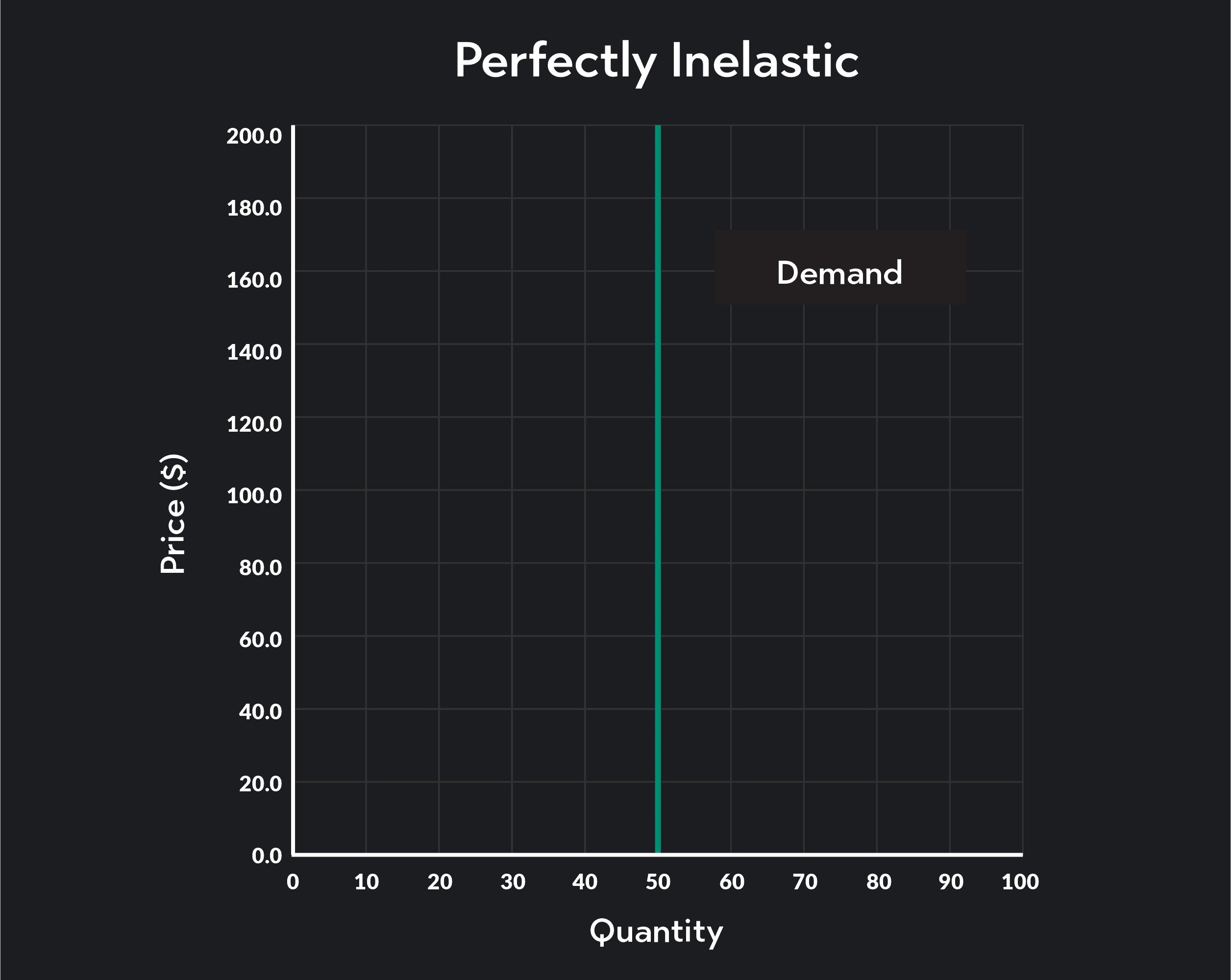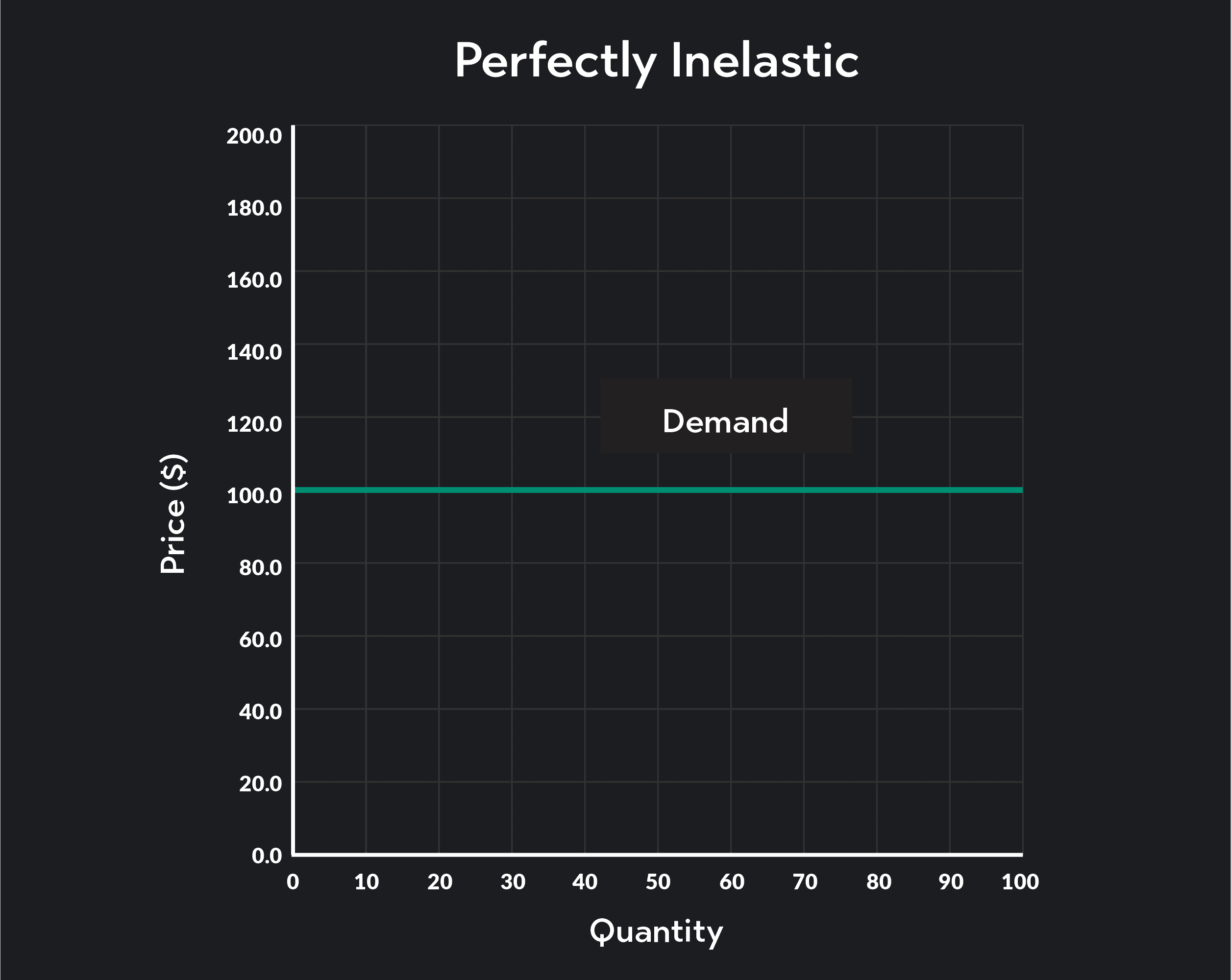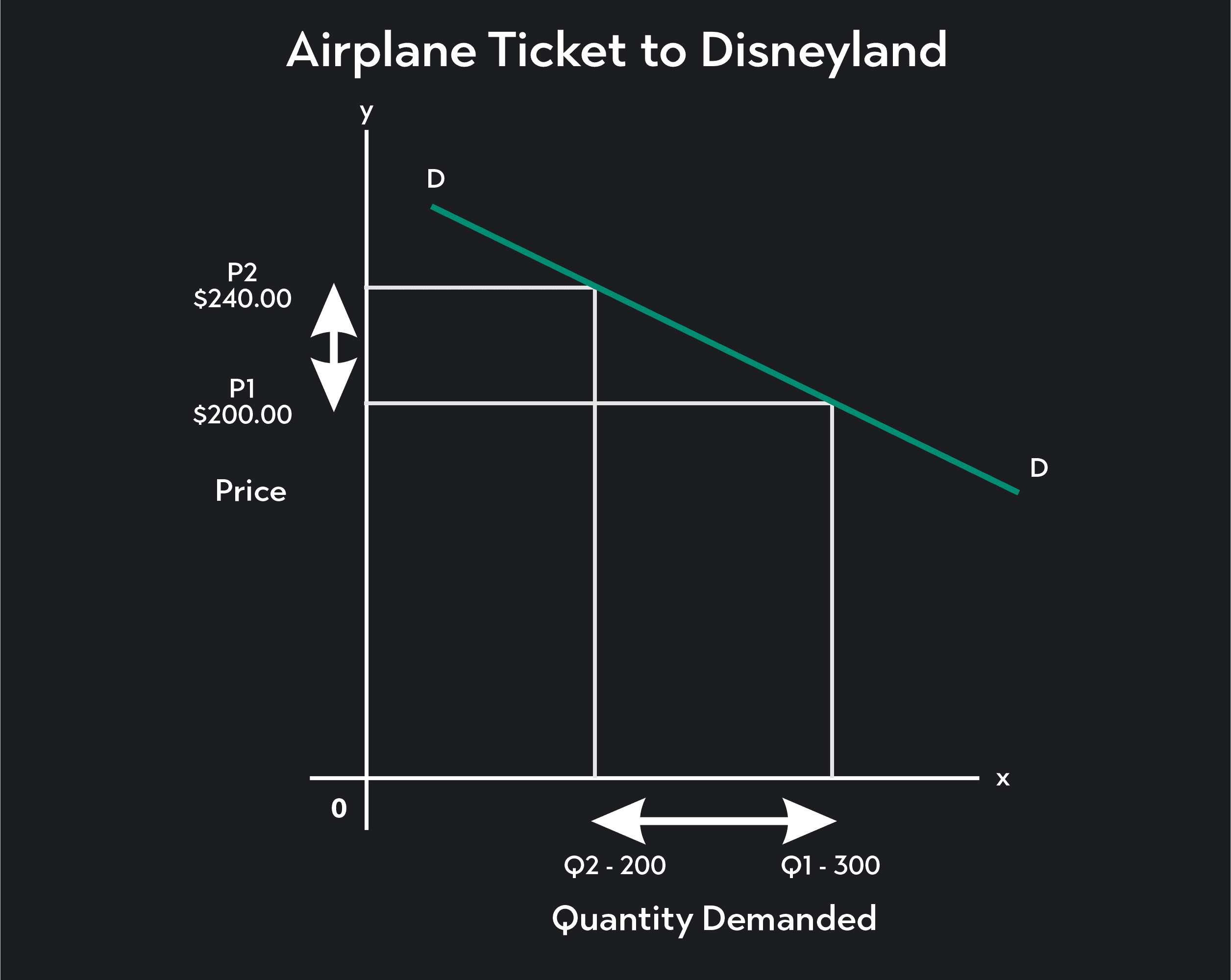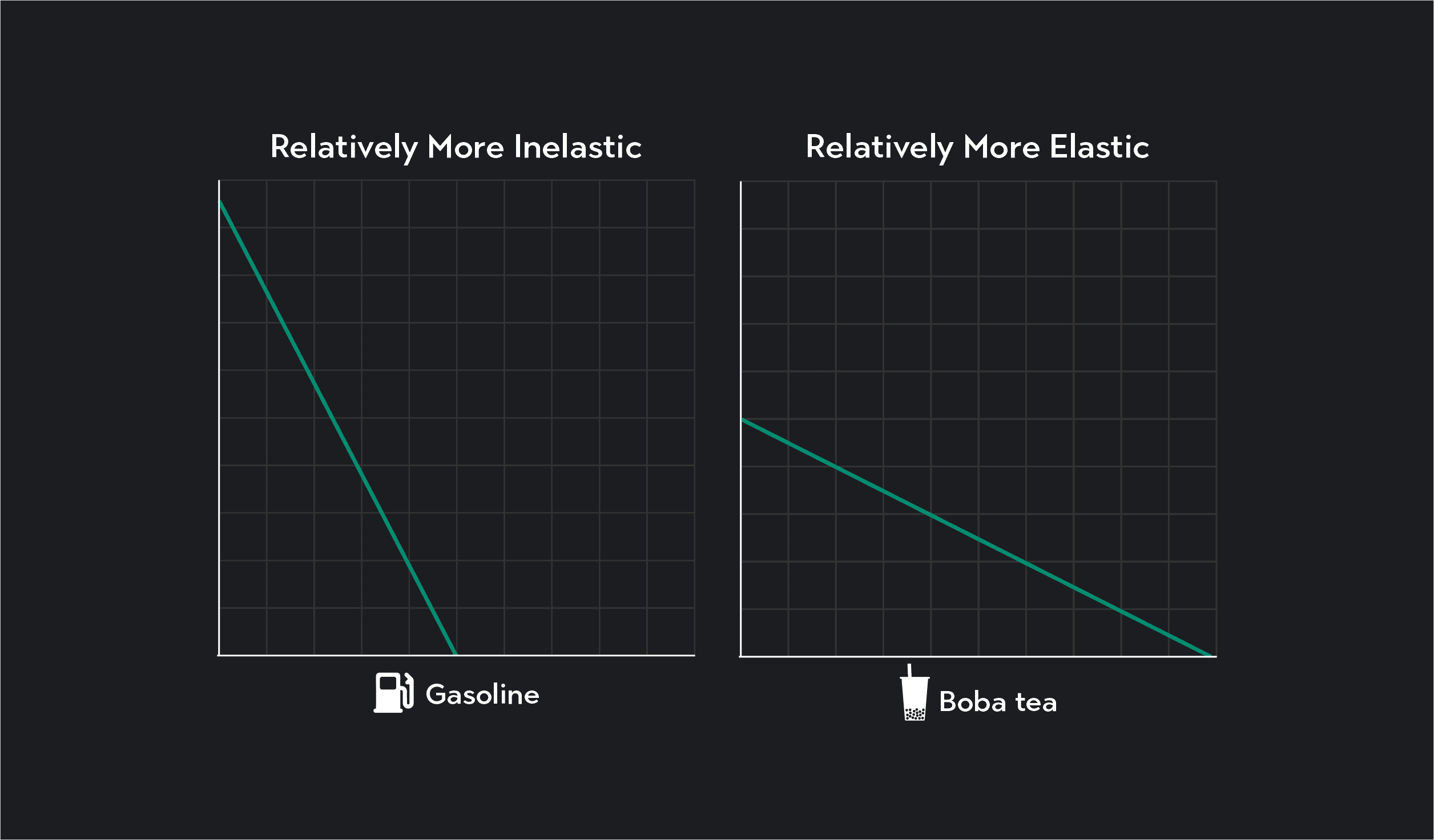
Economics
Understanding the Supply Curve & How It Works
Learn about what a supply curve is, how a supply curve works, examples, and a quick overview of the law of demand and supply.
Alejandro Diaz Herrera
Subject Matter Expert

Economics
05.11.2022 • 7 min read
Subject Matter Expert
Learn what relative elasticity is, the factors that influence it, and the difference between perfectly elastic and perfectly inelastic demand.
In This Article
Elasticity is the percent change in one variable relative to a change in another variable. In economics, we use elasticity to measure the responsiveness of buyers and sellers relative to the change in the price of goods and services. Before explaining what is relatively elastic, let's review how elasticity works and the five different types of elasticity.
Although elasticity of demand can sound a bit technical or intimidating at first, we will see throughout this article that elasticity is very intuitive. That is because elasticity is an outcome of the well-known law of demand.
From the law of demand, we know there is an inverse relationship between the price of a product and the quantity demanded. If the price of goods increases, the demand will decrease. Similarly, if the price decreases, more people will want to buy the goods and demand will increase. The price elasticity of demand measures the percentage change of the quantity demanded relative to its price change.
As we can imagine, certain goods are more sensitive to a change in price than others. For example, when the price of medicine changes, it has a minor effect on the demand for medicine than the price change of an airline ticket to a vacation destination. This is because medicine is usually a necessary good, so consumers are not very responsive to price fluctuations. However, a slight price change of an airline ticket for vacation will have a much more significant effect on the quantity of demand since consumers are much more price-conscious when buying an airplane ticket to go on vacation.
To understand these dynamics more, let’s go over what the following five types of price elasticity are:
Unit Elasticity
Elastic Demand
Inelastic Demand
Perfectly Inelastic Demand
Perfectly Elastic Demand
Unit elasticity means that the percentage change in price causes an equal percentage change in the quantity demanded.
Economists consider something is unit elastic to always equal to one.
A value of one indicates that the percentage change in price has the same exact percentage change in the quantity demanded.
Elastic demand means consumers are responsive to price changes. Goods that have a percentage change in price which results in a greater percentage change in the quantity demanded are elastic.
Economists consider elasticity with a numerical value greater than 1 to be elastic.
A value of 1 or higher indicates that the percentage change in price results in a more significant percentage change in quantity demanded.
We can think about elasticity like a rubber band. The more you can stretch a rubber band the more elastic it is. A tighter rubber band that does not stretch is inelastic. The same idea applies to the demand curve for goods and services in the economy. The more sensitive consumers are to a small change in price, the more elastic they will be.
Inelastic demand means consumers are not very responsive to price changes. If the percentage change in price does not have a significant impact on the quantity demand then those goods are inelastic.
Economists consider elasticity with a numerical value less than 1 to be inelastic.
A value less than 1 indicates that the percentage change in price does not result in a significant percentage change in quantity demanded.
Generally, goods that are more of a necessity like gasoline or medicine tend to be inelastic. This makes intuitive sense, consumers do not have many choices if the price of gas or medicine goes up. Therefore, the demand curve is not significantly impacted by a price change
Perfectly inelastic demand means that no matter what the price change will be there will be absolutely no change in the quantity of demand.
Economists consider elasticity with a numerical value of zero to be perfectly inelastic.
A value of zero indicates that the percentage change in price has no effect on the quantity demanded.
Perfectly inelastic goods are rare but can happen if the good is an absolute necessity. For example, no matter how much the price will change for a life-saving drug, the demand will stay the same. The graph below shows how a perfectly inelastic demand curve will be a vertical line. The straight vertical demand curve indicates that the quantity demanded remains unchanged no matter the different prices.

Perfectly elastic demand means that even the slightest price change will deter consumers from buying the product.
Perfectly elastic demand is infinity because the slightest price increase will make demand go to zero.
Perfectly elastic demand happens when there are plenty of close substitutes in a competitive market. For example, if two ice cream trucks in front of the park sell the same exact product. If one truck increases the price, people will buy ice cream from the other (cheaper) ice cream truck, so the demand for ice cream from the more expensive truck will be zero. A perfectly elastic demand curve is horizontal. This indicates that even a slight price increase will cause the demand to zero.

Most luxury products are elastic goods. Since they are not essential to living life, consumers are picky about the price. Another example that often has elastic demand is goods purchased only a few times throughout one's lifetime, like a washing machine or car; these tend to be elastic goods because consumers can shop around for a better price.
The graph below shows the demand curve for an airline ticket to Disneyland in Orlando, FL, from New York City.

At a price of $200 (P1) the quantity demanded is 300 (Q1). If the price rises to $240 (P2), the quantity demanded falls to 200 (Q2). This is elastic demand because a 20% increase in the price causes a 33% decrease in the quantity demanded.
We know the formula for Price Elasticity of Demand (ED):
So we get ED:
Since the price elasticity for an airline ticket to Orlando is 1.65, the demand curve is elastic (ED > 1 = elastic demand).
Relative elasticity means that if comparing the demand curve of two different goods and one has a greater consumer response to a price change, then the other is relatively elastic. In the real world of business, the two extremes of perfectly elastic and perfectly inelastic are not very common. However, economists and business managers often use the relative elasticity of two different demand curves to measure how consumers will react to price changes in different goods.
Relative elasticity means that consumers have a certain amount of responsiveness to price changes for every product type. Therefore, we’ll compare two different demand curves to get the relative elasticity. By comparing the demand curve of one good relative to another product, we can determine what is more elastic—i.e., what goods are more sensitive to price changes. The graph on the left is the demand curve for gasoline, and the graph on the right is the demand curve for Boba Tea.

As we can see, the demand curve for Boba tea is more horizontal than the demand curve for gasoline. This indicates a significant change in demand with each price change. On the other hand, the demand curve for gasoline is relatively a vertical line because the demand is not too sensitive to gasoline prices.
Without calculating how much the elasticity is at each point on the graph, the difference in elasticity here makes intuitive sense. Since as we can imagine, even if the price of gas goes up, people who drive cars don't have many options (at least in the short-run), so they will still have to buy gas at a higher price. But, on the other hand, the price for Boba tea is relatively elastic. So if one tea shop decides to raise the price, it will affect the size of the demand.
Now that we understand the definition of elasticity, we will discuss several determinants that cause the market of certain goods to be more elastic than others. The causes which influence relative elasticity are external factors that influence people’s response to price changes:
How essential goods are will be a significant factor in determining the relative elasticity. For example, the demand for basic foods like bread, milk, and eggs does not change much depending on price because these are things that are needed to live. Conversely, luxury goods or even something that we can skip buying once in a while, like candy or soda, are more sensitive to price since consumers are more price-conscious with unessential goods.
The availability of substitutes will determine the elasticity of something. If there is nothing that can easily replace a particular product or service, then higher prices will not automatically deter consumers from buying it. However, if there are easy ways to substitute that good, consumers will move away from products with high prices.
Time has a major role in determining demand elasticity. An increase in time will always increase the elasticity of a good, and the decrease of time – i.e., a time constraint – will always decrease the elasticity. Let's use an example of transportation to understand this better. Let's assume that the train that takes you to work every day increases its price one day. The first few days after the price increase, one might not have any other commuting options, so they are ready to pay the higher train price. After some time, however, people will start to find alternative possibilities; maybe they will buy a bike or arrange a carpool. The point here is that the more time consumers have while purchasing something, the more elastic the price will be. The same will apply the other way around; the less time one has when buying something, the less sensitive they will be to the price.
The general income level of people has a major effect on the elasticity of goods. The more money one earns, the less price-sensitive they are. So we can assume someone with a low income has a more significant response to price changes than someone with a higher income.
Another way economists like to think about the income level effect on elasticity is that goods which take up a large percentage of your income (like rent or a car lease) are more likely to be elastic. Meaning to say that when it comes to larger purchases, people are more sensitive to price changes because it's consuming a large percentage of their income.
Outlier (from the co-founder of MasterClass) has brought together some of the world's best instructors, game designers, and filmmakers to create the future of online college.
Check out these related courses:

Economics
Learn about what a supply curve is, how a supply curve works, examples, and a quick overview of the law of demand and supply.
Subject Matter Expert

Economics
This article gives a quick overview of perfect competition in microeconomics with examples.
Subject Matter Expert

Economics
This article is a comprehensive guide on the causes for a demand curve to change. Included are five common demand shifter examples.
Subject Matter Expert